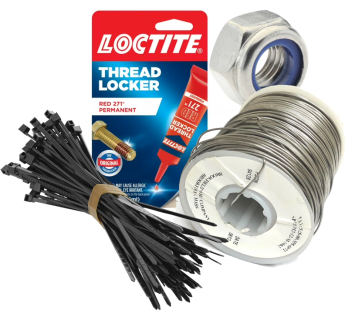What’s Shakin’? Tighten and “Loc-tite” your bolts.
Safety Moment
Michael Moradzadeh
San Francisco Station
The recent near-tragedy with the Boeing 737 losing a “door plug” mid flight, followed by the discovery of loose fasteners in others in the fleet, has encouraged me to write this report of some related events at sea.
Following a largely uneventful Transpac race from LA to Honolulu, I turned my boat over to my navigator, the fabled John Jourdane a fellow CCA member, for the return trip. I learned a few things. My boat, a Santa Cruz 50 named Oaxaca, raced to Hawaii with pretty much no failures underway. The worst of it was a few rips in sails and some chafed lines. I was happy to hand over a boat in good shape. The return, however, had some surprises.
Vibration. There’s often a prolonged period of motoring to cross the largely windless Pacific High and to make headway in some adverse winds. Motoring, at least with my vintage Pathfinder engine, introduces vibration into the boat. Many, many cycles. Oh sure, sailing the 2300 miles to Hawaii had had a lot of tossing around, but that was nothing compared to the steady thrum of the engine at 1800 RPM day after day.
Things started to shake loose as components subject to vibration failure made themselves known. SPOILER ALERT – the highly competent return crew John had organized was up to all needed repairs.
In no particular order:
- The alternator adjustment bracket, which had been installed with a bit of an angle to it since before the boat came into my stewardship*, failed at the pivot bolt. Tim was able to drill a new mounting hole and carry on. (There was also a spare bracket in the toolkit, if needed).
- Gear in the “garage” aft compartment shifted around and dislodged the autopilot brain, pulling its wires loose. This had not been a problem on the way over, but, again, conditions were different.
- The instrument panel over the nav station came popping open, crashing down on the remote monitor for the laptop and putting it out of commission. The team switched to using the laptop directly, which was always the backup plan.
- I discovered on collecting my seabag that, having tossed my boots -- joined together with a carabiner -- on top of my foul weather pants, the carabiner had chewed a semicircle into the seat of the pants.
- As John brought the boat into the slip here in California, the top of the steering pedestal holding the compass and engine controls came loose, as the four quarter-inch bolts that held it in place had backed out. As the boat was already dead slow, just shutting off the engine solved the problem, though just holding that part in place would also have worked.
- Several weeks later, on an outing, we discovered that some internal bolts in a cabintop winch had backed off, causing an unstable setup as well.
Obviously, the referenced installations had not been adequately secured against long engine vibration. While everything was just fine and performed as expected over the prior several thousand miles of conventional sailing, the very different stresses of motoring revealed some shortcomings.
My visualization of the challenges the boat would have underway had not adequately accounted for these stresses. Here’s a hint from the world of flying:
The word “safetying” is a term universally used in the aircraft industry. Briefly, I am told, safetying is defined as: “Securing by various means any nut, bolt, turnbuckle etc., … so that vibration will not cause it to loosen during operation.” Reference AC 43.13-1B Chapter 7 para 7-122.
Some of the items mentioned above would clearly have benefitted from “safetying” while others would have benefitted from better foresight. The clear takeaway, however, is the need to survey the boat with the eventuality of sustained vibration in mind, and to address the harms that can arise from that, whether by better securing components, use of “nylock” nuts, use of Loctite, or separating items that can chafe.
Does anyone want some seatless foulie pants?
Lessons Learned (or reinforced)
- When inspecting gear and installations, bear in mind that the vessel may operate in multiple “modes” (cruising, racing, motoring, heeled way the heck over, slamming into waves) and consider their security accordingly.
- Use security wires or zip-ties, or loc-tite, or other “safetying” measures as appropriate.
- Bear in mind that some safetying products like nylon insert nuts are single-use only.
- No matter how perfect your installations were at the start, a daily tour of the boat looking for things that might need attention is a mark of good seamanship. Look for cracks, leaks, loose fasteners, slacking turnbuckles, and, of course, chafe. Don’t forget to check hidden areas for problems that might be developing in secret!
UPDATE 2024 Pacific Cup
As Principal Race Officer for the 2024 Pacific Cup, San Francisco to Hawaii, I was informed of a number of gear failures. In addition to the typical steering and halyard problems, I was dismayed to hear of a handful of forestay failures. In each of these cases, the connection at the bottom had drifted loose, either through a pin working free or a turnbuckle turning and unbuckling, possibly due to forestays being looser in a downwind run. Again, inspection and securing with some non-rotating means might have prevented these issues (and one dismasting). Of particular concern in this case was the ill-placed reliance on locknuts to secure the turnbuckles. These simply did not do the job. A positive restraint on rotation, or any possible failure, is best.





